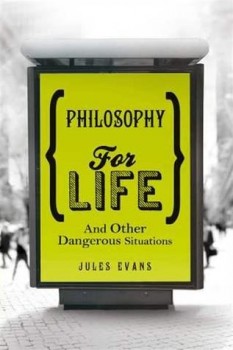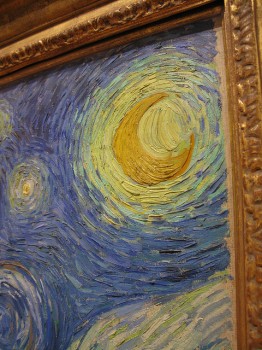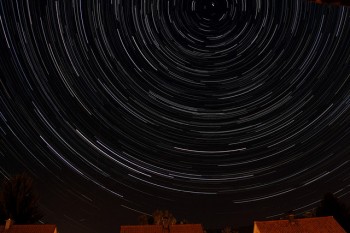For most of my life, I have lived near the ocean. Being near the shore has always had a calming and even spiritual effect on me. (see my recent article on “Spirituality, Wellbeing, and Maui Moments.”) There is something about the vastness of the ocean, and in particular the sky over the ocean (especially at night,) that opens me up to the universe beyond. Staring out at the horizon where the ocean meets the sky, I contemplate infinity and have two competing thoughts:
1. I am tiny and insignificant
2. I am connected to this massive universe that is filled with energy and mystery.
Somehow, this experience gives me a sensation of bliss, calm, hope, wonder and awe.
In Jules Evans’ new book “Philosophy for Life (and Other Dangerous Situations,)” he describes the astronaut Edgar Mitchell having similar feelings of transcendent interconnectedness while watching the Moon, Sun and Earth through the window of his spacecraft. To make sense of his experience he turned to ancient philosophy, and found the Sanskrit term “Samadhi” defined as “an experience of seeing things in their separateness, but experiencing them as a unity, accompanied by ecstasy.”
Mitchell found that this concept existed in almost every culture (he called it the “Big Picture Effect”) and his experience led him to found the Institute of Noetic Sciences, dedicated to understanding and expanding human consciousness.
One blogger, Lauren Tober, who shares my passion for the ocean, describes this “Big Picture Effect” as the opposite of egocentric. It’s “allocentric” with a “wider focus” and “other-centered.” In fact, she cites mindfulness expert and neuropsychologist Rick Hanson who says there is one surefire way to cultivate allocentric awareness: “All we need to do is look up and out to the horizon.”
When I look out at the sky over the ocean, I often feel as if I am aware of the planet hurdling through space and swirling around with the stars above (as if I am standing in my favorite painting, Starry Night, by Vincent Van Gogh.)
In Evans’ book, he relates Mitchell’s story to the philosophy of Heraclitus, an ancient Greek philosopher from the Ionian peninsula:
What Heraclitus bequeathed us was a very dynamic picture of the universe, in which everything is constantly changing. This is in contrast to other Greek philosophers, like Pythagoras and Plato, who thought the cosmos was perfectly harmonious and stable . . . Today, astronomy suggests Heraclitus was right, that the universe is an incessant flux of creation and destruction, with black holes consuming galaxies, and then vomiting them out again as new stars.
While humans tend to be constantly judging their daily experiences as “good” or “bad,” Heraclitus proposed a “cosmic consciousness” because “from a cosmic perspective, everything is good, everything is as it should be, everything is beautiful.” This is Samadhi.
Karen Armstrong, the author of The Great Transformation, has said that humans use two methods to explain their world: Mythos and Logos. Logos is about empirically observing our world through scientific exploration, and Mythos is more about tapping into our intuition by sharing stories, art and poetry.
In the last century, we have shifted almost exclusively to Logos as the means of understanding our world, relegating the arts of Mythos to mere entertainment. “Philosophy is dead,” said Stephen Hawking, “Scientists have become the bearers of the torch of discovery.” But according to Armstrong, both mythos and logos are essential . . . “each would be impoverished without the other.”
What Evans does well in his book is to weave the two together on multiple levels. He combines stories of human experience (like Mitchell’s Samadhi) with the teachings of ancient philosophers, and then he ties it in to modern science on wellbeing, finally relating it to his own personal experience. If you read his book, I think you will agree that reports of the death of philosophy have been greatly exaggerated.
Think about this for a second. I’m reading a story about a twentieth century astronaut and relating his experience to Heraclitus’ ancient teachings on cosmic consciousness while simultaneously considering how this ties in to the modern science of wellbeing and remembering the visceral and emotional feeling of standing before my favorite painting. So many connections are happening that they cannot be grasped intellectually.
But it feels really good.
Samadhi.
—
References and recommended reading:
Evans, J. (2012). Philosophy for Life (and other Dangerous Situations). Rider.
by Jeremy McCarthy
Connect with me on facebook, twitter, or pinterest.
Now available: New e-book on The Psychology of Spas and Wellbeing.





Hey, Jeremy,
Your synthesis of Mythos and Logos associated with art and awareness felt like I was eating 4 scoops of my favorite ice cream! Jeremy, this may just be my favorite blog ever.
I will save it to savor as I look up into the Vallarta skies. Gratitude and appreciation for the way your mind assimilates and for how your writing paints pictures onto my soul.
Looking out and above is Fun..
Looking within and connecting to the above is 1 Million times Better!
So simple yet so difficult for most, as John Hagelin expains it.
Yet again with so many purposely Falsifing the Truth to keep their Job (Cancer Reaserch and most Shrinks) no wonder most are lost searching not with-in But With-Out!
I think the point of this article is that the distinction between within and without is largely illusory. It’s like trying to determine which brush stroke in Van Gogh’s painting is the sky and which one is the star.
If we think it is illusory then we are further behind the 8 ball then think…The Field is the realist something in all of our Lives..Proven Scientificly many times over to exist. To deny this is to deny our very exsistance!
For thousands of years many, many of us had the time to be alone and spend time looking with-in…to find answers and peace of mind, body and soul…helped by those that knew the road ahead.
Now for the most part many many of us can not remember when such time existed!
I’m not talking about that 3 day weekend to the beach with hundreds of distractions by the minute or escaping by reading the book which is really just that, escaping one self by Trancing Out.
John Hageln explans it much bette then I ever could…
The world greatly reflects this problem today…..
http://www.youtube.com/user/ThriveMovement
Let us converge in person sometime to enter into into the Vortex,, and the Void, without the words, living the truth of the Illimitable,, after we have connected now in this Logos,,, and Matrix..On to the next dimension from who we Are and back again.
Thank you for inviting me in, Jeremy. Edgar’s energy is so unifying for all of us. He would be pleased if you wish to visit him. Let me know if you would like a personal introduction.
See you all in the Inner Planes..
In Oneness,
Wai Ching